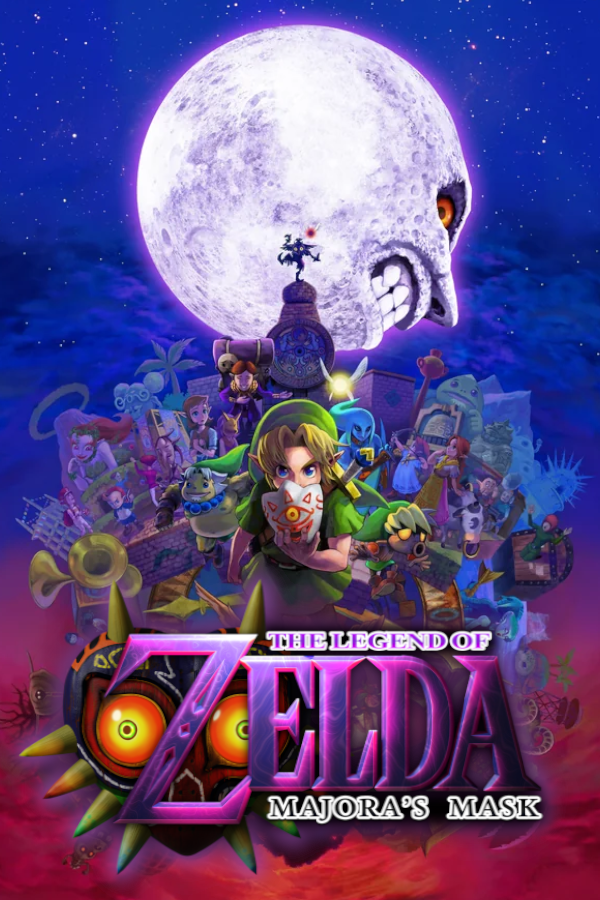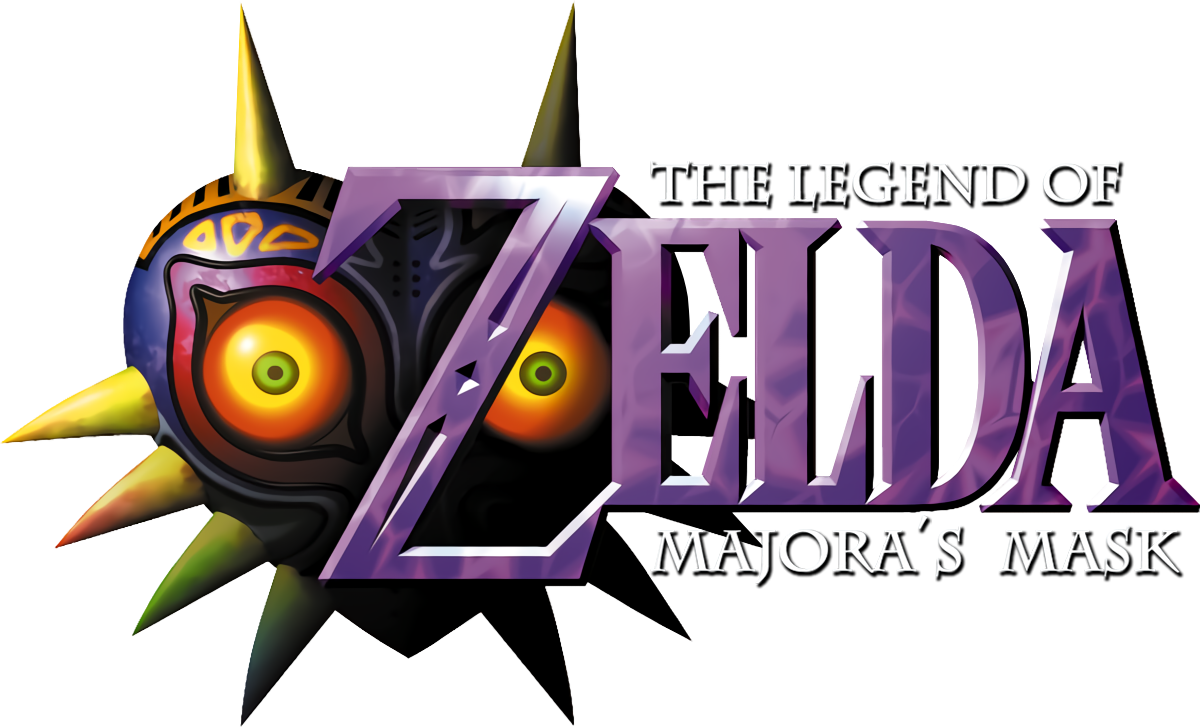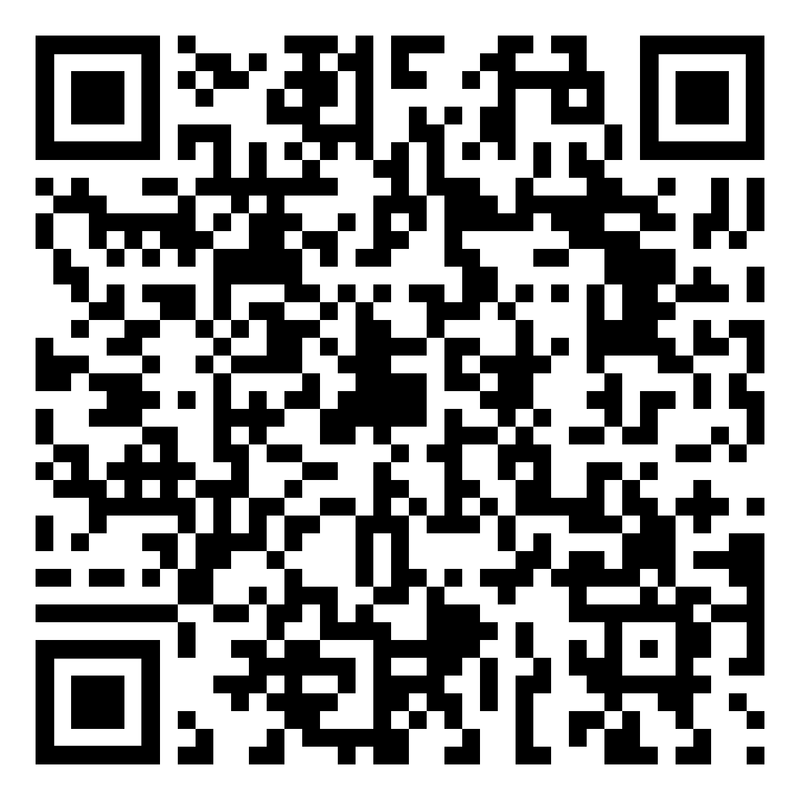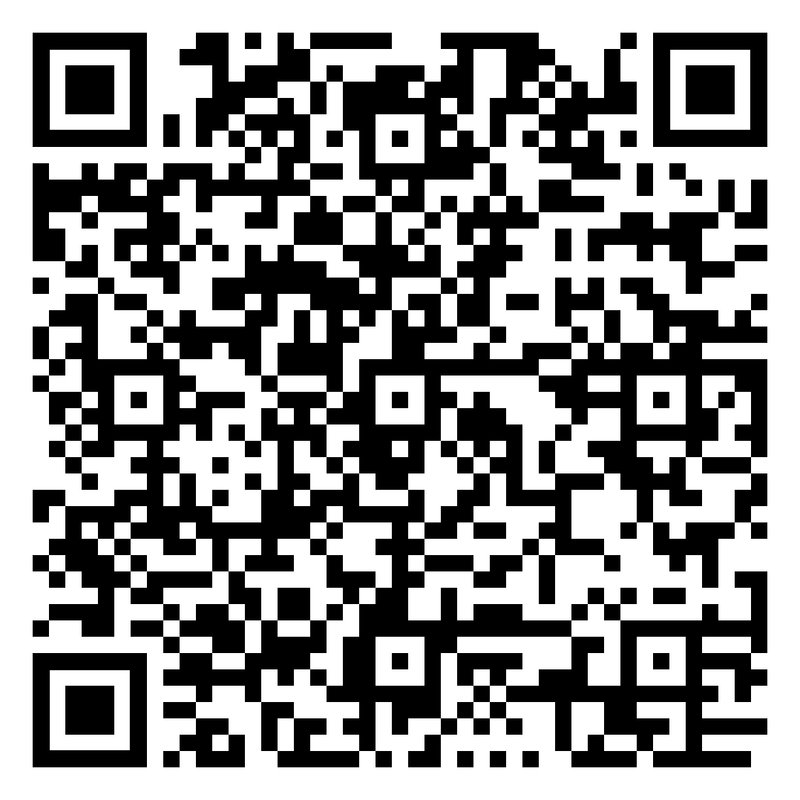The Legend of Zelda: Majora's Mask
Fresh off his adventure in Ocarina of Time, Link gets lost in the haunted woods and dragged into Termina, a parallel world on the brink of annihilation. A mischievous Skull Kid, possessed by the demonic Majora’s Mask, has set the moon on a collision course with the land, giving Link just three days before everything goes boom.  Armed with the Ocarina of Time, Link must relive those final days over and over, using mystical masks to transform into different races (Deku, Goron, Zora, and more), unravel the stories of Termina’s doomed citizens, and stop the mask’s apocalyptic power before time runs out, permanently. The 3DS version keeps the original’s haunting story but refines gameplay, tweaks some notorious difficulty spikes, and adds smoother visuals.
Armed with the Ocarina of Time, Link must relive those final days over and over, using mystical masks to transform into different races (Deku, Goron, Zora, and more), unravel the stories of Termina’s doomed citizens, and stop the mask’s apocalyptic power before time runs out, permanently. The 3DS version keeps the original’s haunting story but refines gameplay, tweaks some notorious difficulty spikes, and adds smoother visuals.
| GAME DATASHEET | |
|---|---|
| Name | The Legend of Zelda: Majora's Mask The Legend of Zelda: Majora's Mask 3D |
| Genre | Action adventure |
| Console | N64, 3DS |
| Released | 2000 |
| Developer | Nintendo |
| Publisher | Nintendo |
| Language | Japanese | English | Spanish | Italian | French | Deutsch |
Majora’s Mask was always darker than Ocarina of Time, and the 3DS version amplifies that with polished textures, richer colors, and smoother character models. Clock Town feels more alive, the eerie glow of the moon is even more unsettling, and the 3D effect adds depth to Termina’s twisted landscapes. The brighter lighting softens the original’s grim atmosphere a bit, it’s less murky but also slightly less oppressive. Still, this is the best looking version of one of gaming’s most unique worlds.
The core time-loop mechanic remains brilliant, every cycle lets you uncover new secrets, side quests, and heartbreaking character stories. The 3DS version adds QoL fixes, like an improved Bomber’s notebook that tracks side quests better and a more intuitive save system. Some people hate the tweaks to Zora swimming which now consumes magic, and Deku water hopping which is slower, but others appreciate don't care. Boss fights are also redesigned, with new weak points that make them more engaging, or more handholdy, depending on who you ask. 
The soundtrack is still a masterpiece of melancholy, from the ticking clock tension of the Final Hours to the lonely piano of the Astral Observatory. The 3DS version keeps the original’s haunting melodies but cleans up the audio for sharper quality. Sound effects, like the creepy mask transformations or the moon’s distant groans, are just as impactful as ever.
The 3DS version includes the Fierce Deity Link mask from the start if you scan (or emulate  ) the Majora’s Mask amiibo, and the fishing holes from Ocarina of Time make a surprise return as a bonus minigame. The biggest addition is the revamped Bomber’s notebook, which makes side quests, the heart and soul of the game, way more manageable. It’s not packed with new content, but the refinements make Termina’s dense world more accessible.
) the Majora’s Mask amiibo, and the fishing holes from Ocarina of Time make a surprise return as a bonus minigame. The biggest addition is the revamped Bomber’s notebook, which makes side quests, the heart and soul of the game, way more manageable. It’s not packed with new content, but the refinements make Termina’s dense world more accessible.
Also, no Zelda game nails side characters like Majora’s Mask, everyone in Termina feels real. The Anju and Kafei quest is memorable, a heartbreaking love story playing out against doomsday. The Deku butler’s silent grief, the Zora band’s final performance, even the postman sprinting through panic, they’re not just fetch quests, they’re tiny tragedies. Compare that to Ocarina’s simpler townsfolk or Breath of the Wild’s charming but shallow villagers, and it’s clear: Termina’s NPCs are the story.
They call this the darkest Zelda game, and yeah, no kidding. You tell me, the inescapable end of the world feeling, many themes of grief and death, Link wearing the corpses of the dead as masks, a little girl locked in a closet screaming for her mother who’ll never come. The Deku scrub you play as? Probably murdered before the game even starts. Even Twilight Princess’s edgy tone feels tame next to Termina’s existential dread.









.png)


Join the conversation